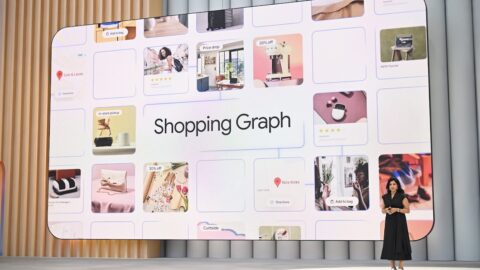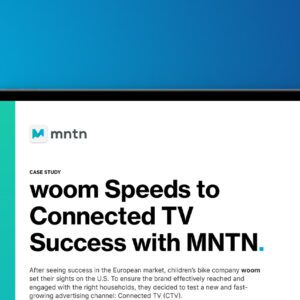As connected TV (CTV) rapidly becomes the dominant method for consuming television, it also has become the fastest-growing ad channel in the U.S., accounting for one in every 10 dollars spent on digital advertising, according to Emarketer. In fact, U.S. brands alone spent more than $28 billion on CTV advertising last year, making up one-third of the total amount of money spent on TV advertising as a whole.
Perhaps most impressive though, is that many of the advertisers spending that money are companies completely new to the world of TV advertising. Historically, TV advertising required deep pockets and large upfront commitments, but with the rise of CTV, smaller brands are increasingly able to incorporate television into their marketing strategy.
“Digital-first marketers, outside of the Fortune 500, generally have made their businesses on the internet,” added Peter Hamilton, Senior Director of Ad Innovation at Roku in an interview with Retail TouchPoints. “But all these folks are starting to become very curious about CTV. One, because they need diversification and they’re looking for new channels that can provide it. Two, it has all the same markers that they’re used to in buying digital media. And three, access is getting easier and it’s becoming more democratized.”
In fact, Ali Haeri, SVP of Marketing at CTV performance marketing platform MNTN said that 90% of the brands using the MNTN platform are first-time TV advertisers.
“The legacy TV networks have been dealing with the same 100 or so brands for like 40, 50 years because the price of admission was so high to advertise on linear TV,” he said in an interview with Retail TouchPoints. “So when they see the volume of advertising that MNTN is bringing to their TV networks, they’re like, ‘Who are all these companies?’ There are all these growth-stage ecommerce companies that are incredibly savvy digital marketers. Now that whole subset of the market is doing TV advertising, and they love it because it looks, feels and smells just like all the other performance marketing channels that they’ve been using. But it’s totally new to a lot of these legacy TV publishers.”
Dig deeper into the brave new world of CTV advertising in our free special report, Making Connected TV an (Even More) Meaningful Part of the Advertising Mix.
Familiar Mechanics in an Unfamiliar Channel
In fact, one of CTV’s biggest advantages over linear television is how familiar the buying and targeting process feels to digital marketers.
“There are all these auxiliary complications to running linear TV campaigns that led to it being perceived as being inaccessible, whereas now [with CTV] it’s self-serve,” said Haeri. “Audience targeting looks like it does on social; reporting is granular — this is the language of a performance marketer,” he noted, and because of that “we look at CTV as a performance marketing channel, similar to the other performance marketing channels that advertisers use,” such as search, social and display.
Case in point: 90% of CTV advertising currently is transacted programmatically, according to Emarketer. “It’s way more affordable for someone now to come into this environment in a pay-as-you-go campaign; just a couple thousand bucks to go in, start a campaign, see the results and scale from there, rather than a big upfront commitment with a linear TV campaign that’s hard to measure,” said Haeri.
CTV Presents a Diversification Opportunity for Digital Marketers
With digital channels like social media and online search now crowded to the brim with advertising, CTV also presents a new space for advertisers to play and spread out their investments. “These performance-oriented marketers have been buying on search and social for some time, but in some cases, they’ve reached a plateau of how much they can spend in those channels,” said Roku’s Hamilton.
“They also want to diversify and not be dependent on just a couple of players, so they’re looking for alternative channels that provide return on ad spend and can be always on,” Hamilton added. “CTV has the opportunity to do that because it has a lot of the same hallmarks as search and social in terms of control over targeting, measuring the outcomes and being able to do it at scale through digital tools.”
“CTV fits so nicely into media plans because clients need the additional reach,” added Brooke Weller, SVP of Digital Media and Analytics at digital marketing agency REQ in an interview with Retail TouchPoints. “Meta ads, Google ads, even Reddit ads are all getting so saturated; CTV is going to help lower your total cost per cost per mille (CPM) impressions, because you’re getting so many more eyeballs on it than you could ever get via Meta ads. Add in that CTV can be a huge multiplier because you’re getting the brand awareness — there’s a halo effect — and you’re getting so many eyeballs on your brand that you would never have gotten.”
The Challenges with CTV Creative (and Some Solutions)
There’s still one knotty challenge for smaller brands: the creative. An ad on television carries prestige, but it also demands a certain polish that can be expensive to achieve. However, even that is shifting in the new world of digital.
“You don’t need to think of video commercials as being what they used to be,” advised Hamilton. “Consumers are used to seeing more authentic types of ad creative; they’re used to seeing influencers breaking the fourth wall and talking to them about something — it’s okay for that to happen in television, and we encourage it.
“And in fact, marketers in general are becoming more comfortable with video because of social,” Hamilton added. “[The dimensions] might be 9×16 instead of 16×9 in terms of landscape versus portrait, but it is a video medium and they have become fluent in video ad creative, so the muscle is already there.”
Moving into CTV does require marketers to shift their video production strategies, though: “Gone are the days when you could spend a year planning a video or pay $5,000 to $25,000 for one video and put all your eggs in that basket for the whole year,” said Weller. “These platforms need you to refresh your creative once a month. But there are companies now [that can help you] create and pump out video at scale. You need to figure out how to film once and chop that into like 12 different videos. There are also a lot of creators that do really high-quality videos for decent prices.”
Additionally, “there are lots of different creative services now that can take existing creative and translate it,” said Hamilton. “One partner that we work with is Spaceback, which takes a social post and turns that into a video for CTV. You can tag onto what’s working for you, what’s viral for you and bring that over, and it’s not an expensive thing to produce.”
AI also is coming into the picture, with tools that allow brands to produce video more cost-effectively or to easily modify existing assets for seasonal occasions and different platforms. But it’s advisable to tread lightly with the use of AI — consumers can be touchy on the subject, as Coca-Cola learned late last year.
Dig deeper into the brave new world of CTV advertising in our free special report, Making Connected TV an (Even More) Meaningful Part of the Advertising Mix.















